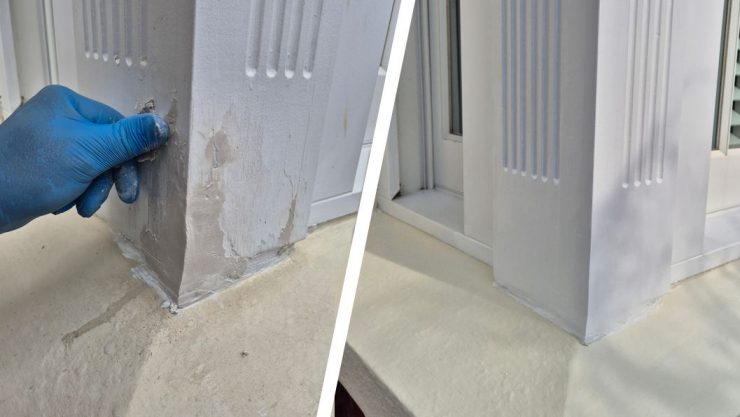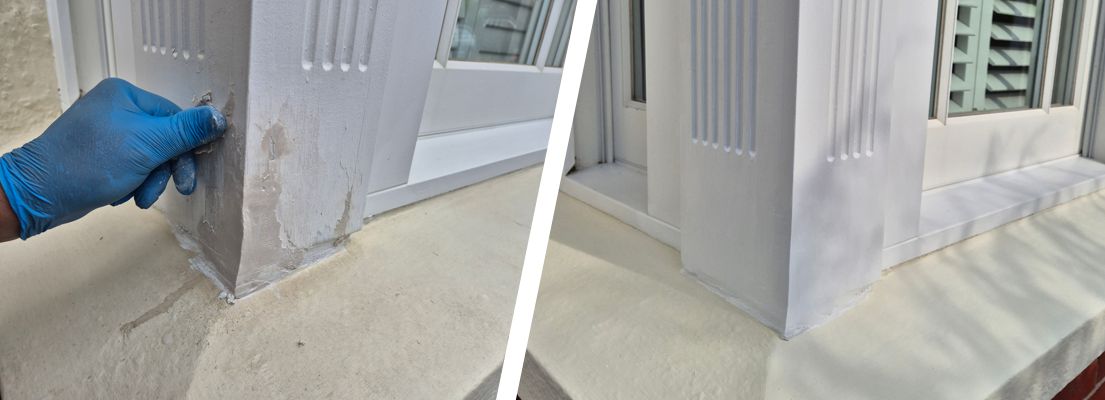
Case Study: Rotted Bay Sash Window Frame Undergoes Stabilisation, Repair & Restoration
A bay sash window frame at a house in the United Kingdom was left needing repair just eight years after being installed because of poor preparation by the installer and severe weathering. The homeowner cleaned, stabilised and rebuilt the damaged corner using CAE3 Penetrating Superglue and Sylmasta AB Original Epoxy Putty.
Case Study Overview
Site Domestic property
Location England
Repair Type Wood repair
Defect Heavily rotted bay sash window frame
Repair Products
CAE3 Penetrating Superglue,
Sylmasta AB Original Epoxy Putty
Case Study PDF
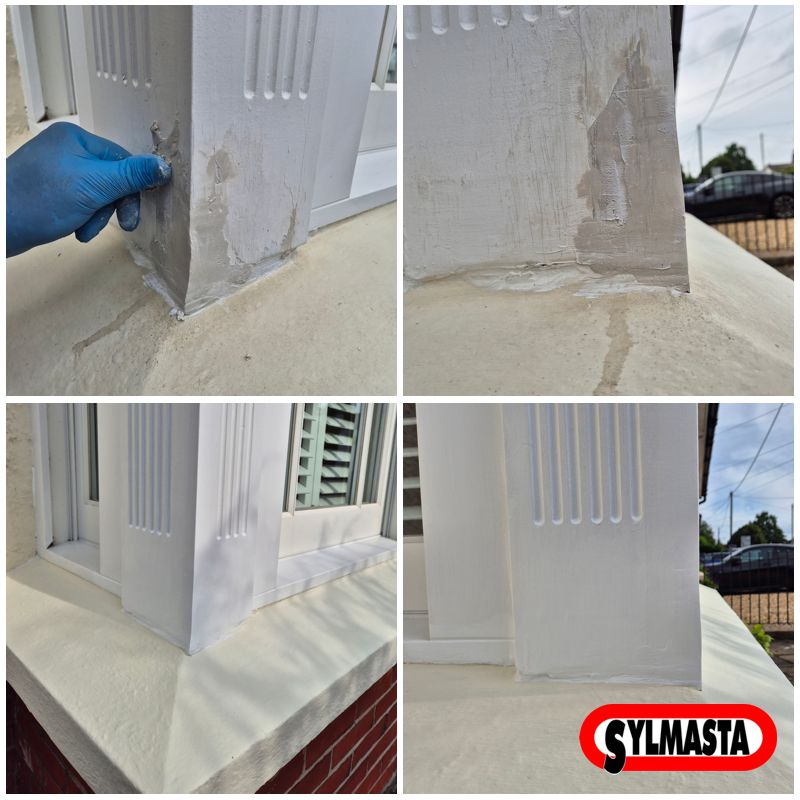
Case Study Details
When installed eight years earlier, the bay sash window was brand new. Thanks to severe weathering and poor preparation by the installer, one sharp corner had become heavily rotted in just eight years.
The rot first softened the wood, then caused cracks to appear before chunks of timber eventually fell away. It left very obvious and unsightly damage visible to all visitors and passers-by.
Wanting to repair the bay sash window, the homeowner contacted Sylmasta for advice. A restoration plan was formulated involving cleaning, stabilising and then rebuilding the damaged corner.
All loose rotted timber was removed from the bay sash window frame as the first stage of repair. Any remaining fragile wood was then stabilised using CAE3 Penetrating Cyanoacrylate Superglue.
The extreme low viscosity of CAE3 makes it as thin as water. This allows CAE3 to penetrate porous surfaces, wick into cracks and flow easily into small and hard-to-access areas.
When CAE3 was applied to the bay sash window corner, it permeated deep into the damaged fibres of the frame. It cured rapidly to turn all wood which had been left soft and fragile by rot into a rock-hard material ready to be rebuilt with epoxy putty.
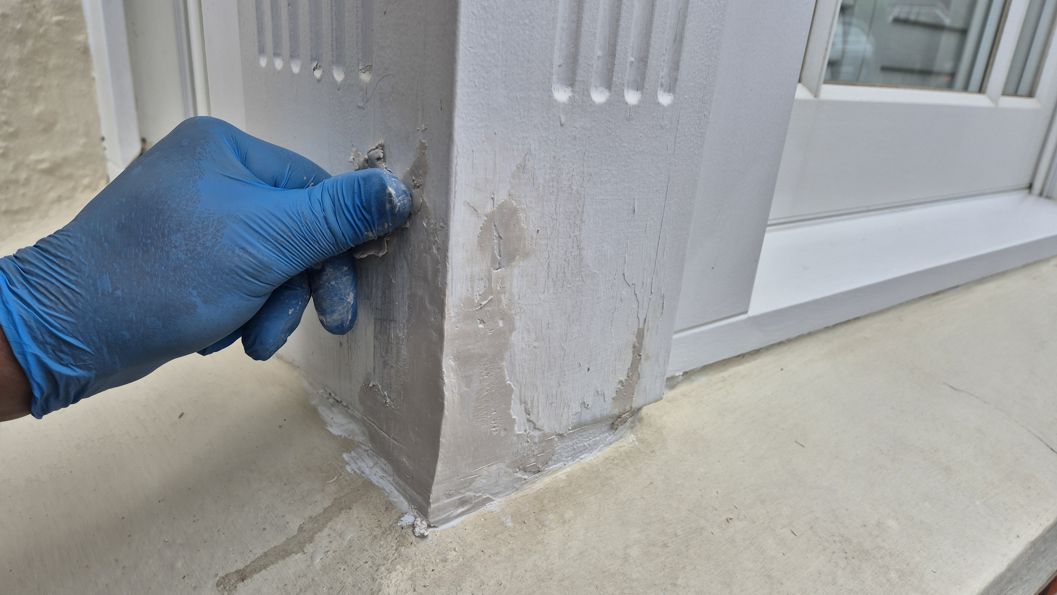
It was decided to use Sylmasta AB Original Epoxy Putty. AB Original was chosen for its two-hour work time, allowing the homeowner to mix, shape and apply the putty carefully without the worry of it curing off quickly.
AB Original was kneaded by hand and applied direct to the frame. It easily adhered to the stabilised wood. Enough putty was added until all the missing wood was filled and replaced, leaving the damaged corner rebuilt.
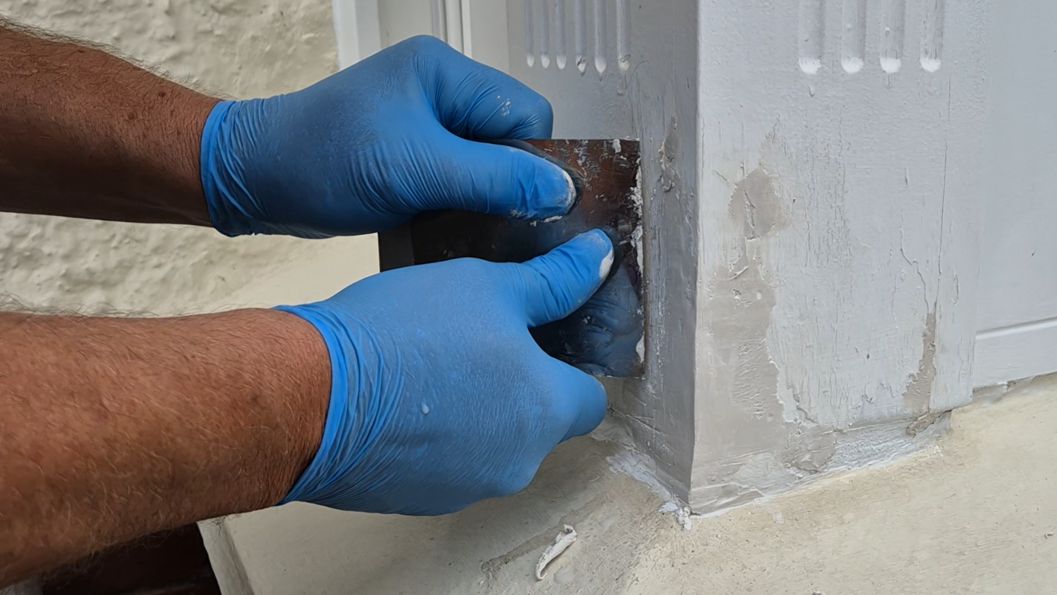
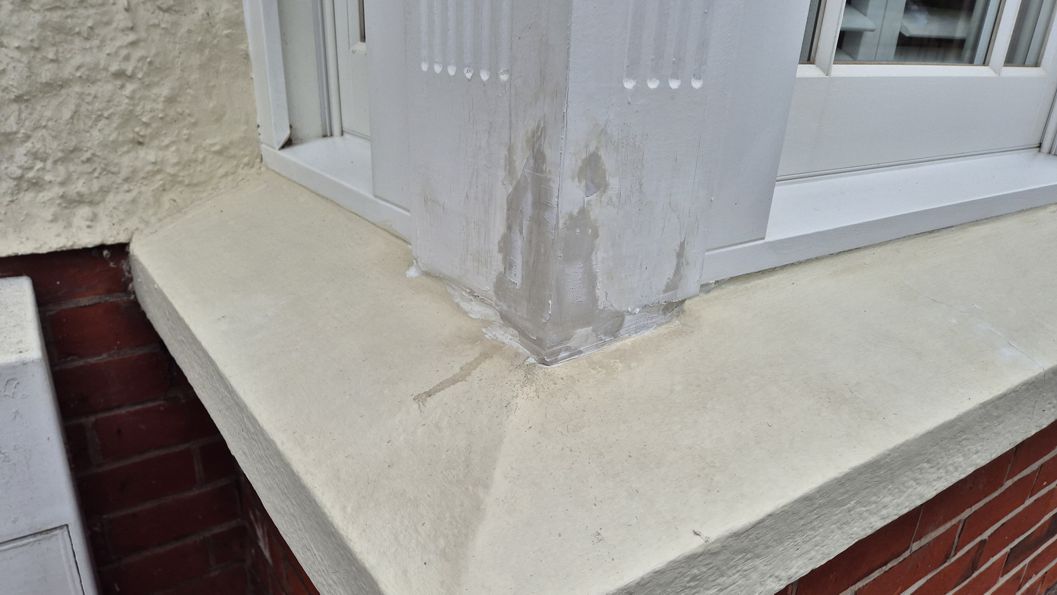
Before curing, the putty was smoothed off using a metal spreader and a little water. Once it had fully hardened, it was lightly sanded down and then painted the same white colour as the sash window for a seamless restoration.



The homeowner had never handled epoxy putty before making the repair. They said afterwards they liked how straightforward an AB Original Stick was to use, simply by cutting off the amount of putty required and mixing by hand.
They also appreciated not having to rush the putty application because of the longer work time, and that AB Original did not sag or lose shape as it was applied to the bay sash window corner.
Products Used
CAE3 Penetrating Superglue
Low viscosity cyanoacrylate superglue stabilises wood by turning soft fibres rock hard
AB Original Epoxy Putty Stick
Epoxy putty which is easy to shape and mould for rebuilding missing sections of wood
Related Case Studies
Case Study: Restoration of Clan MacGregor Dalmally Burial Stones Dated 1390-1528
Case Study: Reassembly & Repair of Composite Stone Water Fountain Cracked into Pieces
Case Study: Classical Composite Order Column Restoration at Former Cinema Built in 1920s
Case Study: Luxury Portable Toilet Trailer Leaking Wastewater Holding Tank Repair
Case Study: Leaking Concrete Flood Defence Wall Repair at Multimillion Pound Dam in Scotland
Case Study: Rotted Wood Beam Repair in Renovation of Welsh Home
Case Study: Pipe Joints Sealed in Cast Iron Rainwater Stack Repair at London Office Block
If you have an application you would like to enquire about, please get in touch
Call: +44 (0)1444 831 459
Email: sales@sylmasta.com

